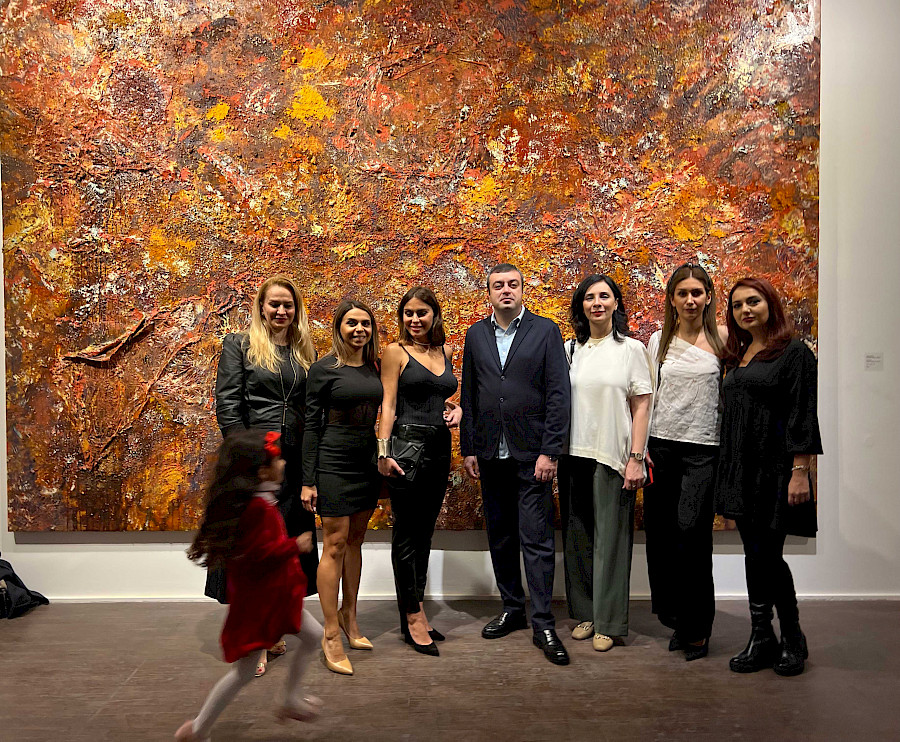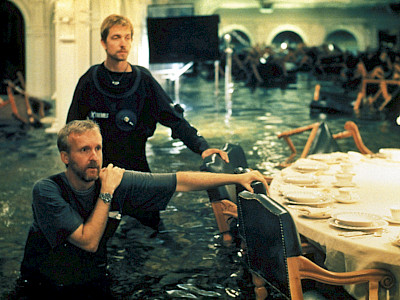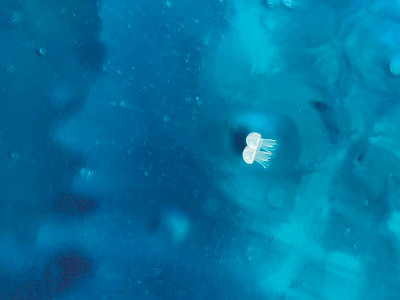
Aida Mahmudova is an Azerbaijani artist and founder of YARAT Contemporary Art Space (Baku). She holds a BA in Fine Art from Central Saint Martin's College of Art and Design (London).
Since 2011 she has participated in many International Exhibitions, also at the 56th La Biennale di Venezia in the Azerbaijan Pavilion.
Exhibition will continue until February 10th at the Zurab Tsereteli Museum of Modern Art.




For Mahmudova the process is everything and her textured works act as tokens of memory, each layer exposing a particular moment on the artist's personal time-space continuum.
Harmonious with the physical nature of her chosen materials and her preferred earthly palette, Mahmudova’s oeuvre continues to invoke the full spectrum of universal human sentiments of love, loss, memory and desire.



Early on in her work, Mahmudova developed a curiosity towards material, which manifested itself through experimentation with light, color and matter in her landscapes and semi-abstract canvases. As her paintings became increasingly more layered the artist expanded her practice into the three dimensional, applying the same approach to sculpture and creating environments both emotive and intense. The artist continually mixes layer upon layer of widely diverse material, such as paper, clay, paint, cement, stone, and, more recently, epoxy resin and untreated marble. These materials take on an almost human quality for the artist as she explores the ways in which they connect, interact and affect one another. Deeply intuitive, the artist uses these experiments as tools for her own material growth and emotional healing.
In 2011, Aida Mahmudova founded YARAT as a hub for supporting work of young artists both locally and internationally. After many years of successful operation and international programming, YARAT now boasts 3 exhibition spaces in Baku with dynamic, commission-based programming by leading international, regional, and Azerbaijani artists, as well as an Artist Residency programme and an array of Public and Educational Programs and Events.
In order to explore all the possibilities of our existence, we have to turn to art and the social sciences. While there are universal values of art, we must not forget that our literary and visual context is strictly local. The following point is essential: The reality in which a person feels himself/herself most profoundly is the artistic reality that leads us to the universal reality. Here, Aida Mahmudova takes us to a kind of landscape, to the reality of the landscape, to save us from the claustrophobia of the self.
Although the reality of the landscape that the artist created at the center of the “Heaven Can Wait” exhibition may seem personal and difficult to understand at first glance, the artist critiques the pathology of the self. On the one hand, life stands before us in all its anatomical reality, and in some cases, life appears as much more than a landscape. However, trying to separate life from the landscape will also lead us to a kind of alienation. All life, all personal or social history, takes place in a landscape, in geography, and there is always some place that resonates in our memory.
Mahmudova states that geography is an essential dimension of civilization, and that people can be contacted within this geography. Two large canvases at the center of the exhibition tell us about geography and its diversity and importance, while also drawing our attention to its beauty and horror. These canvases, which symbolize the beginning and the end, also contain clues about the past and the future. The paintings, which are in harmony with the fragmentary structure of our age, mark an organism's return to its original point after its entire natural cycle (birth, life, and death).
While the artist depicts the world by looking at humanity, she also affirms our shared experience through herself. It is a call made by Mahmudova: The power of art summons and affects our minds, nerves, memories, emotions, and, ultimately, souls. She expresses our existence in the world through the negative castings of the molds she took from her own body and the volumes they occupy in the void. She also conveys hope in her canvases and surface works that she hangs from the ceiling. In these landscapes, we can see our memories as well as glimpses of our future. In her works, she proclaims that through art, we can fight material and spiritual evils, and communicate the ideals of the past, present, and future. Mahmudova shows us the universal importance and power of art because she makes people remember their lives and their history with her works.
Art no longer confines itself to describing, measuring, and analyzing the world as it appears. Mahmudova believes that geography and memory are too abstract to be presented in a naturalist way. While Mahmudova’s works convey that art contributes to the world's renewal, she states that modern time and space are insecure and introverted. Therefore, the world is depicted as an open composition on the edges of the canvases. Her works can be a means of discovery and expression for the audience; she calls for greater openness and creativity where barriers to meaning are removed.
With a courageous pioneering action, Mahmudova shows us that humanity can transcend borders with appropriate skills and tools. As a result, the exhibition seeks to cross physical and conceptual borders. Unless we cross these borders, we will not have humanist geography. A careful look at the works will provide us with significant clues to understand a little bit about how this can happen, and if we dare.



